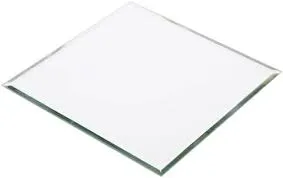

The Allure of Low-E Obscure Glass A Modern Approach to Architecture and Design
In recent years, architectural design has evolved significantly to incorporate innovative materials that enhance not only aesthetics but also energy efficiency. Among these, low-emissivity (low-E) obscure glass has emerged as a popular choice for builders and designers alike. This remarkable material marries functionality with contemporary style, offering numerous benefits that align with modern living.
What is Low-E Obscure Glass?
Low-E obscure glass is a type of glass that has been treated with a microscopically thin metallic layer to reduce the amount of infrared and ultraviolet light that can pass through. This coating reflects heat back into the building during winter while keeping the heat out during summer, thereby contributing to energy efficiency. The term obscure refers to the glass's ability to diffuse light, which provides privacy while still allowing natural light to penetrate the space.
Aesthetics and Design Flexibility
One of the most striking features of low-E obscure glass is its versatility in design. It can be customized in various patterns and textures, making it suitable for a wide range of architectural applications. Whether used in residential homes, commercial buildings, or public spaces, this glass maintains a stylish appearance without compromising on privacy or functionality.
For instance, in a modern home, low-E obscure glass can be employed for bathroom windows or entry doors, ensuring privacy while still inviting natural light. In office settings, partitions made from obscure glass can create an open yet private environment, fostering collaboration while allowing light to flow throughout the workspace.
Energy Efficiency and Sustainability

The importance of energy efficiency in today’s world cannot be overstated. Buildings are responsible for a significant percentage of global energy consumption, and architects are continually searching for ways to reduce this impact. Low-E obscure glass offers an effective solution. By minimizing heat loss in the winter and reducing the gain of unwanted heat in the summer, it helps keep indoor temperatures stable. This not only leads to lower energy bills but also less reliance on heating and cooling systems, thereby reducing the overall carbon footprint of a building.
In addition, the use of low-E glass contributes to sustainable building practices. Many modern building codes and certifications, such as LEED (Leadership in Energy and Environmental Design), reward the use of energy-efficient materials. By incorporating low-E obscure glass, architects and builders can enhance their projects' environmental credentials while meeting regulatory requirements.
Enhancing Comfort and Well-being
Beyond energy savings, low-E obscure glass significantly contributes to occupant comfort. The regulation of interior temperatures leads to a more pleasant experience within a space. Furthermore, the ability to diffuse light means that harsh sunlight is softened, reducing glare and creating a soothing ambiance. This can have a positive impact on mood and productivity, making it particularly advantageous for residential and commercial environments.
Moreover, low-E obscure glass also provides protection against harmful UV rays, which can cause fading of materials and potential health risks to occupants. By minimizing UV exposure, this glass helps maintain the integrity of furnishings, reducing the need for replacements and thus aligning with principles of sustainable design.
Conclusion
Low-E obscure glass is an innovative material that encapsulates the best of modern architectural design. Its dual nature—offering both privacy and light—makes it an attractive choice for various applications while promoting energy efficiency and occupant comfort. As architects and builders continue to prioritize sustainability and aesthetics, the use of low-E obscure glass is likely to grow, shaping the way we think about and interact with our built environments.
In a world increasingly focused on the intersection of energy efficiency, sustainability, and design, low-E obscure glass stands out as a testament to the possibilities of modern materials. It exemplifies how thoughtful innovation can enhance our living spaces while contributing to a better future for our planet. With its myriad benefits, low-E obscure glass is not just a trend; it is a pivotal component of contemporary architecture, promising to redefine the way we experience light and space.